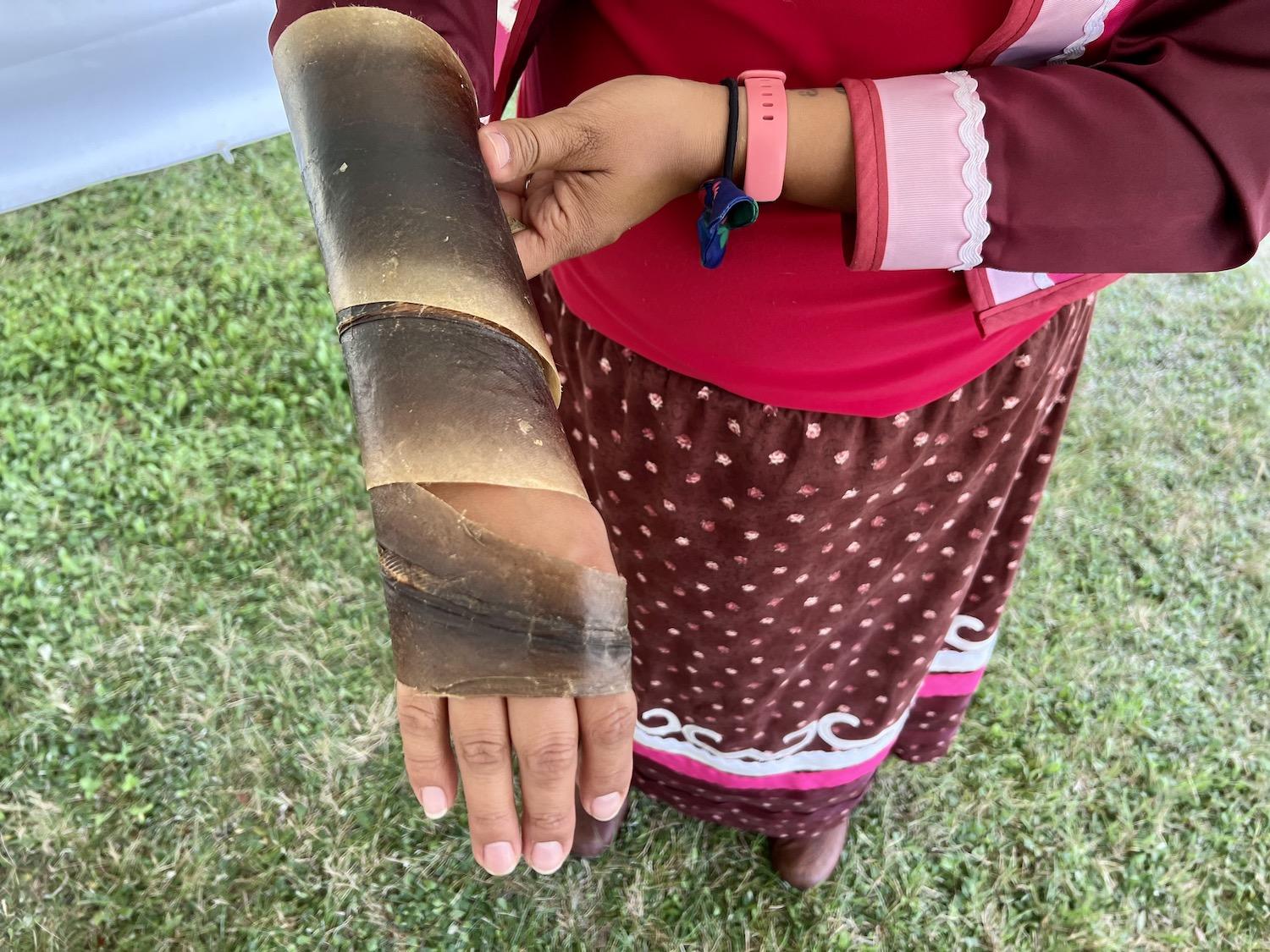
Parks Canada interpretation officer Katrina Sock shows off smoked eel skin that the Mi'kmaq once used as a makeshift cast/Jennifer Bain
Mi'kmaq Stories In Kouchibouguac National Park
By Jennifer Bain
With a theatrical flourish, Parks Canada interpretation officer Katrina Sock wraps something long, thin, brown and white around her arm to demonstrate how the Mi’kmaq people once dealt with broken bones.
The object is clearly natural, not human-made, and could be mistaken for an oversized plant leaf, but it turns out it’s an eel skin that naturally hardens when it dries.
“This one has been smoked so it’s very malleable and it would have been used as a makeshift cast,” Sock explains. “We would have rolled it up, put it away for whenever we needed it. And if we did need it, we would have chucked in a clay pot or a water source. When it got malleable again, we would have wrapped the injury.”
There are two ways to harvest eel skin. Rub the tail in the sand until the skin detaches from the flesh. Or get some newspaper — which helps you grip the elongated slimy fish — and have one person hold onto the eel while a second person rips off the skin.
“It’s like pulling off a wet compression sock,” says Sock. “My grandmother taught me how to skin eels. Not a fan. I’d rather eat them then clean them.”
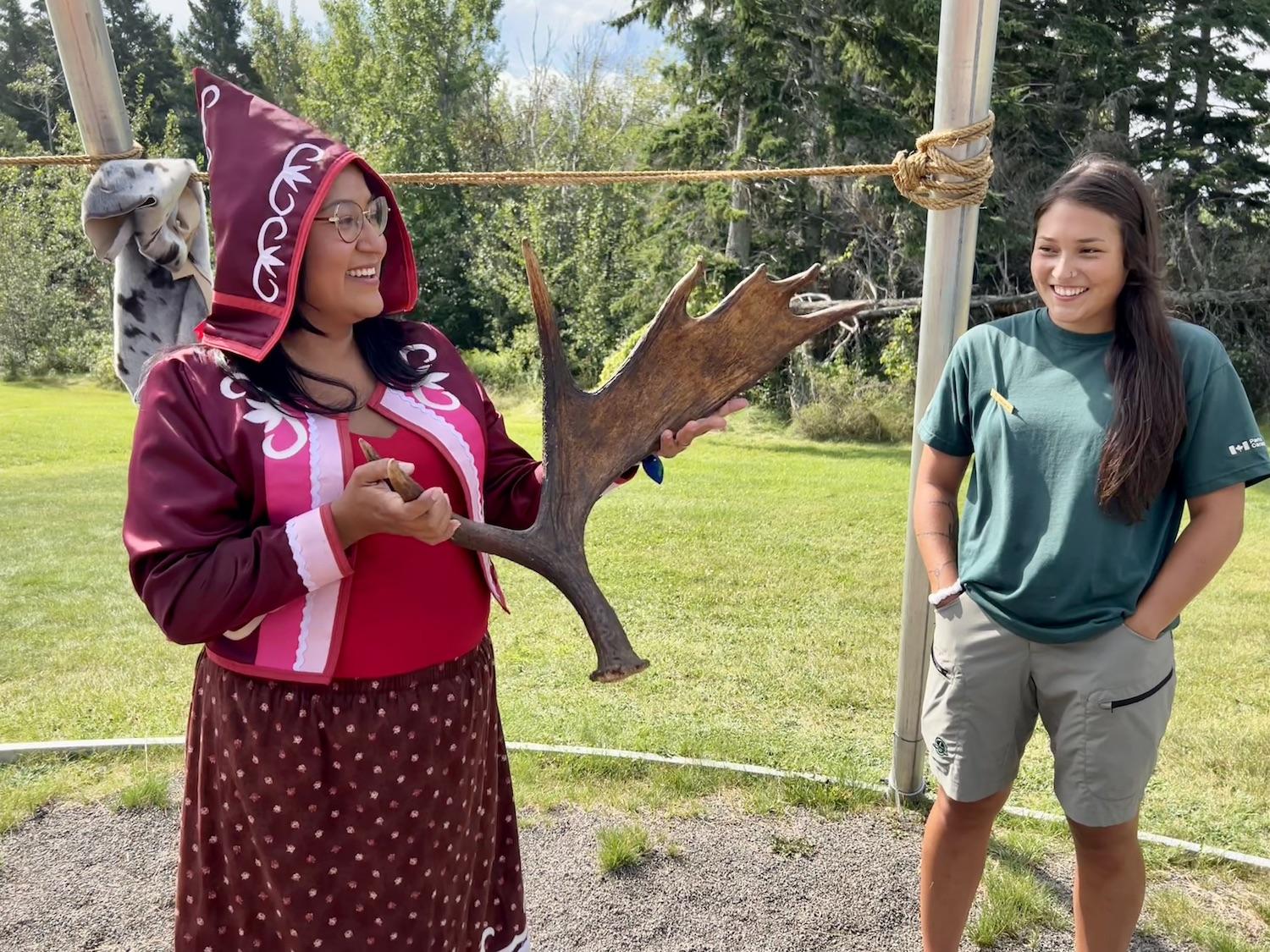
During a Wigwam Gathering at Kouchibouguac National Park, interpretation officer Katrina Sock, left, talks about Mi'kmaq hunting while heritage presenter Hannah Ward looks on/Jennifer Bain
Oh, the things you can learn if you drop into the free programs that Parks Canada puts on every summer at its parks and historic sites. This session is called “Wigwam Gathering” and it’s in Kouchibouguac National Park, about an hour north of Moncton, New Brunswick. The giant interpretive wigwam that we're seated in is near Callanders Beach where fresh and salt water mix creating warm nutrient-rich pools where fish, shellfish, crustaceans, waterfowl and plants thrive. Archaeological finds confirm that resources such as these helped sustain First Nations communities in this area for thousands of years before settlers came along and the park was created.
Sock is Mi’kmaq and from the Indian Island First Nation. She can see the south end of Kouchibouguac from her community but it takes half an hour to drive to the park, which is on unceded Mi’kmaq Territory in one of the seven districts of Mi’kma’ki, the traditional hunting and gathering territory of the Mi’kmaq.
In the Mi’kmaq language, eels are called katew (pronounced gadoo). They’re an important food source for many Indigenous Peoples, and have traditionally been used as medicine, as well as for spiritual and ceremonial purposes for thousands of years.
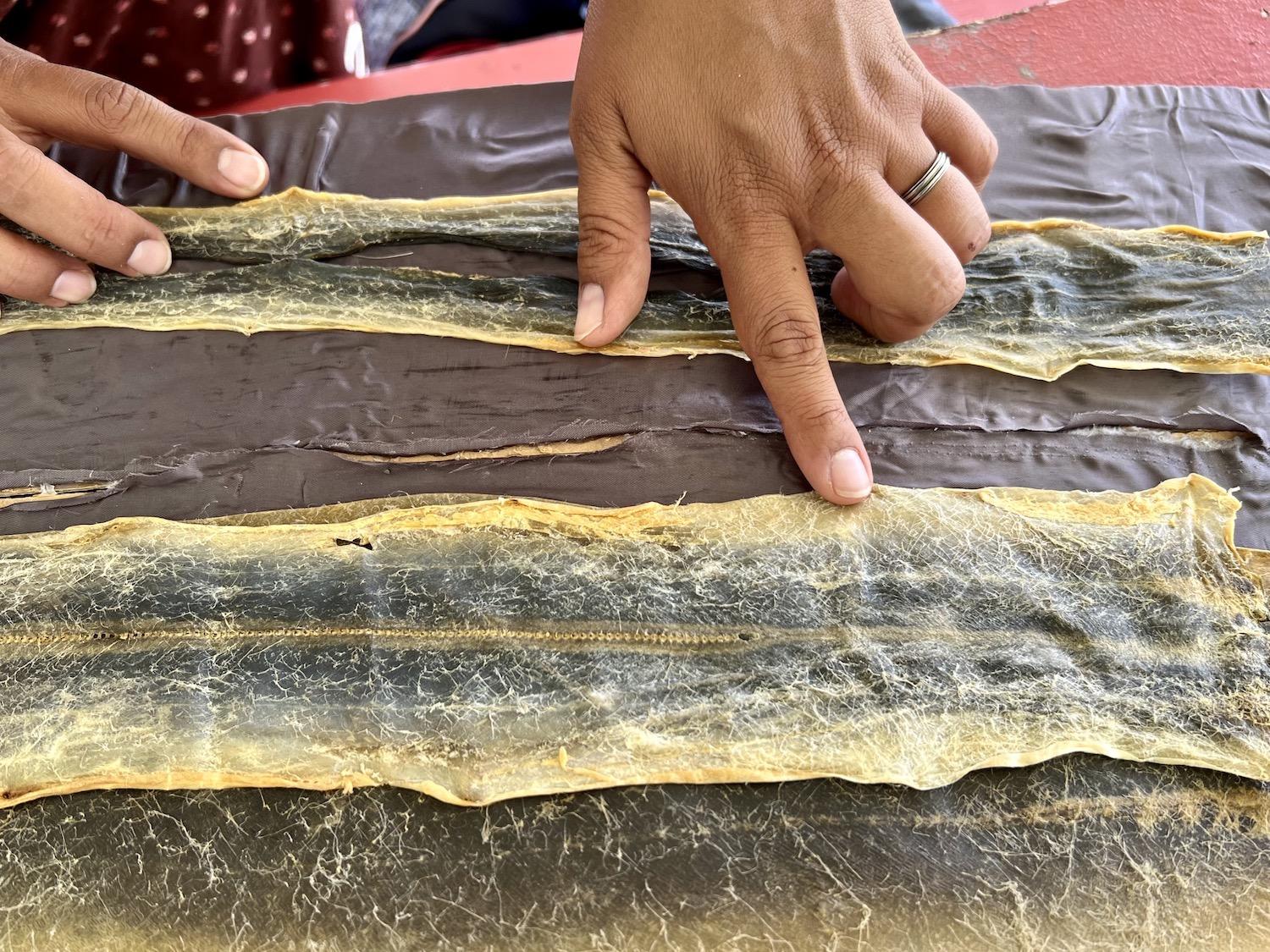
Looking at the back of an eel skin you can see how the fibres hold tight to the flesh/Jennifer Bain
For its part, Parks Canada calls the American Eel (Anguilla rostrata) “a fascinating species with a complex life history and migration." Young eels hatch from eggs in the Sargasso Sea (within the Atlantic Ocean) and eventually move to freshwater lakes and streams until they are ready to return to the Sargasso Sea and spawn.
Sock takes us through more eel fun facts, explaining how they were once speared, even in winter when they were hibernating and had empty stomachs. Some Indigenous Elders still eat eel stomachs. “I’m not a fan,” Sock admits. “I’ll let them fight over that part, but I will eat the meat. It’s very good.”
Eel meat is also full of tryptophan, the same amino acid that’s found in turkey and makes people sleepy. So it makes sense to learn that eel was traditionally used as a last meal for Mi’kmaq Elders that were transitioning into the spirit world.
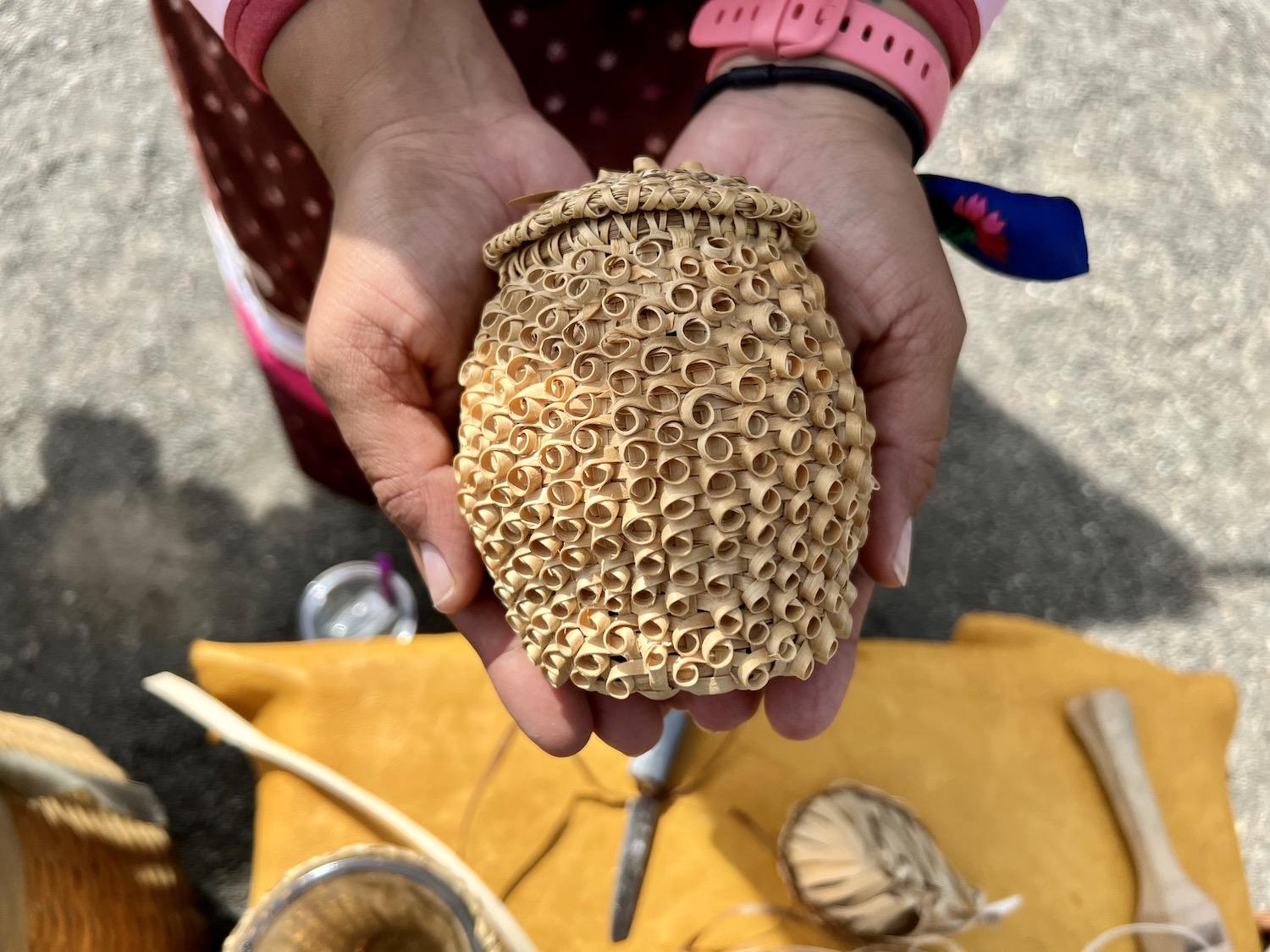
Katrina Sock's grandmother wove this berry basket from black ash/Jennifer Bain
Once, when Sock was dating a six-foot-four footballer and “city boy,” she showed him all the creatures that live in the water and encouraged him to wade out to her uncle’s live well.
“I open the live well and it’s full of eels trying to get out,” she remembers. “I swear to you this man screamed like a lady and he ran across the water back to the shore and he never went back in the water again. Yeah, it didn’t last too long.”
Over the course of an hour on a hot and sunny August morning, Sock regales those of us gathered in the open-air wigwam with stories about Mi’kmaq culture — covering everything from favorite traditional foods (like sturgeon, clams, quahogs, fiddleheads, serviceberries and bog cranberries) to traditional transportation methods (birch bark canoes). She shows off intricate baskets woven from black ash and cedar, and pelts from various animals.
Sock appreciates being able to “tell my story with my own personality and flare,” not to mention the chance “just to tell people that we’re still here. "There are people in the world that still don’t think we exist,” she says with the shake of her head.
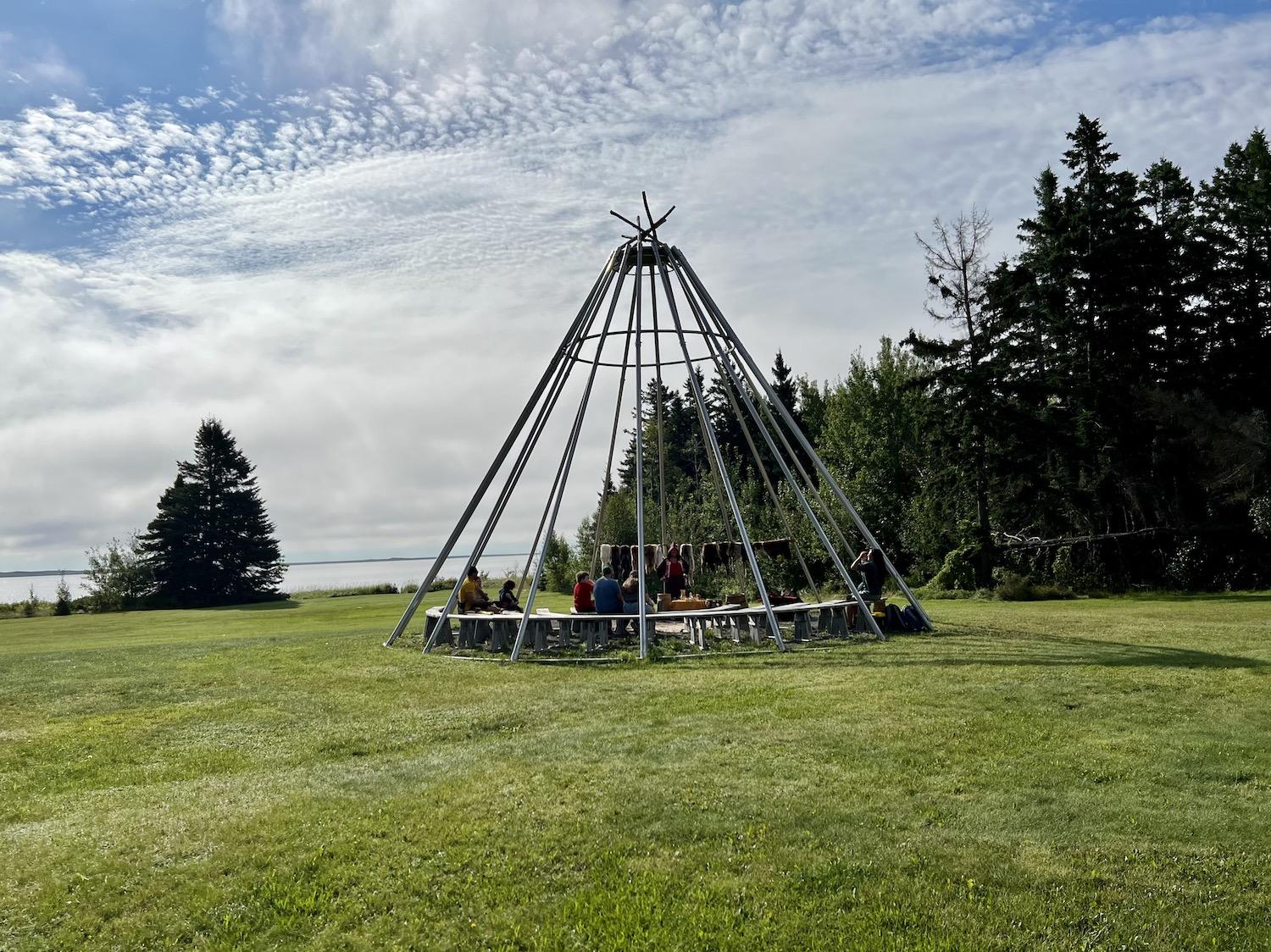
Kouchibouguac has an interpretive wigwam for public programs/Jennifer Bain
Kouchibouguac typically draws a modest 226,400 visitors a year. It showcases Mi’kmaq and French-speaking Acadian cultures and protects 238 square kilometres (92 square miles) of Maritime Plain natural region and more than 15 species at risk.
The park’s often-mispronounced name is rooted in the Mi’kmaq word Pijeboogwek (or Pigipogoek), which means “river that flows and grows into the forest” or “river of long tides.” Pronounced koo-she-boo-gwack and nicknamed Kouch, Kouchibouguac National Park was established in 1969, appropriating the land of about 1,200 Acadian and English-speaking residents in seven villages. Interpretive displays in the visitor reception center provide frank insight into this ongoing saga.
I read all about it while picking up the “plant scavenger hunt” handout that Sock tells me to take on the Bog Trail after her wigwam talk. She leads a weekly medicine walk on this trail, but not today so I’ve got to DIY.
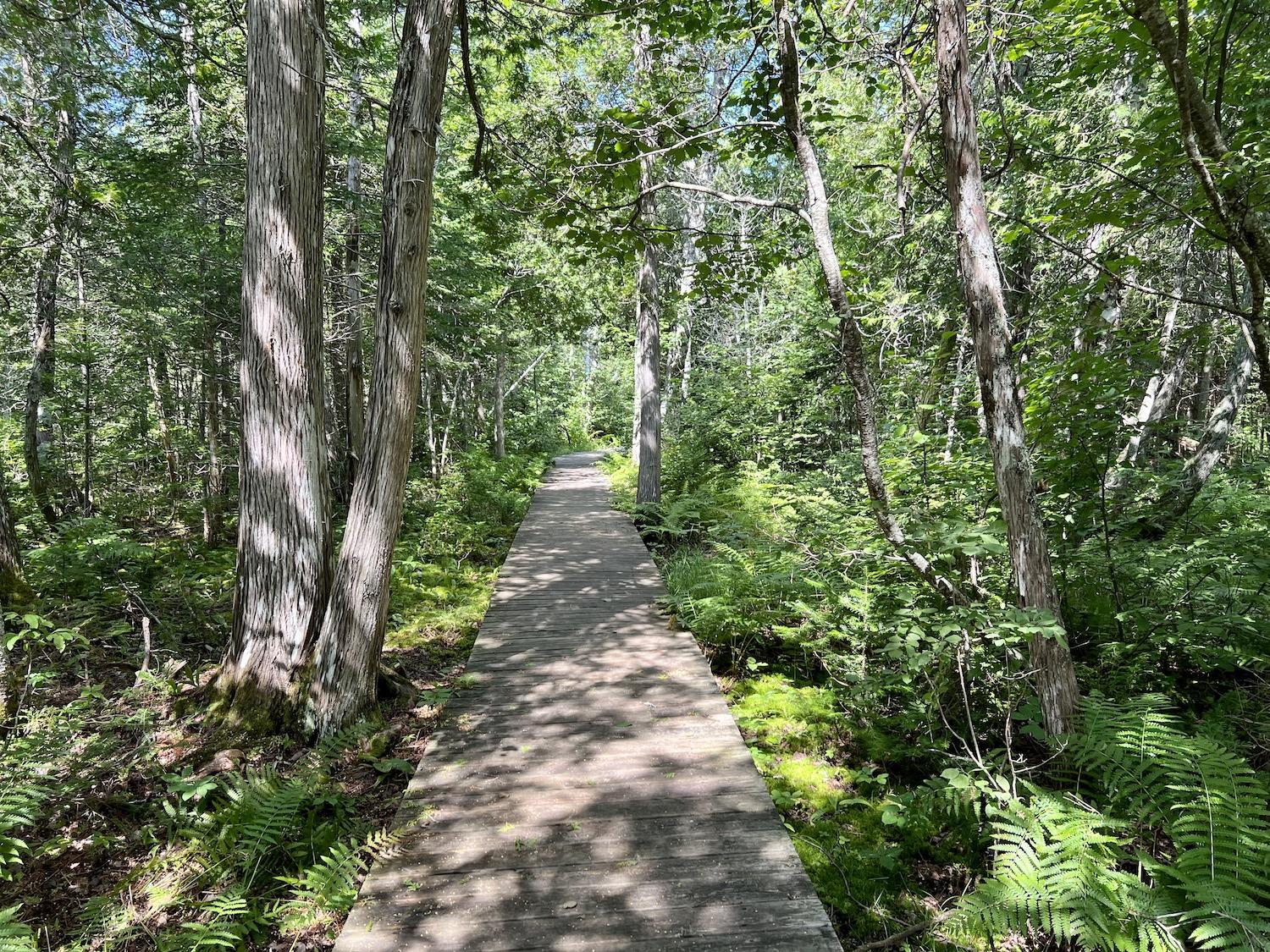
The Mi'kmaq Cedar Trail explores the importance of the Eastern white cedar/Jennifer Bain
Kouch may be prized for its coastal landscapes, sandy beaches, dunes, warm ocean waters, broken series of barrier dune islands and lengthy boardwalk over a lagoon to popular Kellys Beach, but it actually has eight ecosystems. Inland, there are also peat bogs, salt marshes, Acadian forests, tidal rivers and freshwater lakes to explore.
Before I make my way to the Bog Trail, I hike the Mi’kmaq Cedar Trail just steps from Sock’s Wigwam Gathering. The short, self-guided loop takes me through a large stand of Eastern white cedar, which has medicinal and spiritual properties for the Mi’kmaq.
The Mi’kmaq call the swamp Gepmeg, which means “powerful place.” Popular for its fragrant wood, cedar thrives in this wet environment. Sphagnum moss insulates the swamp, keeping it cool in the summer and warm in winter. It's a quiet place and offers a respite from Kouch's crowded beaches.
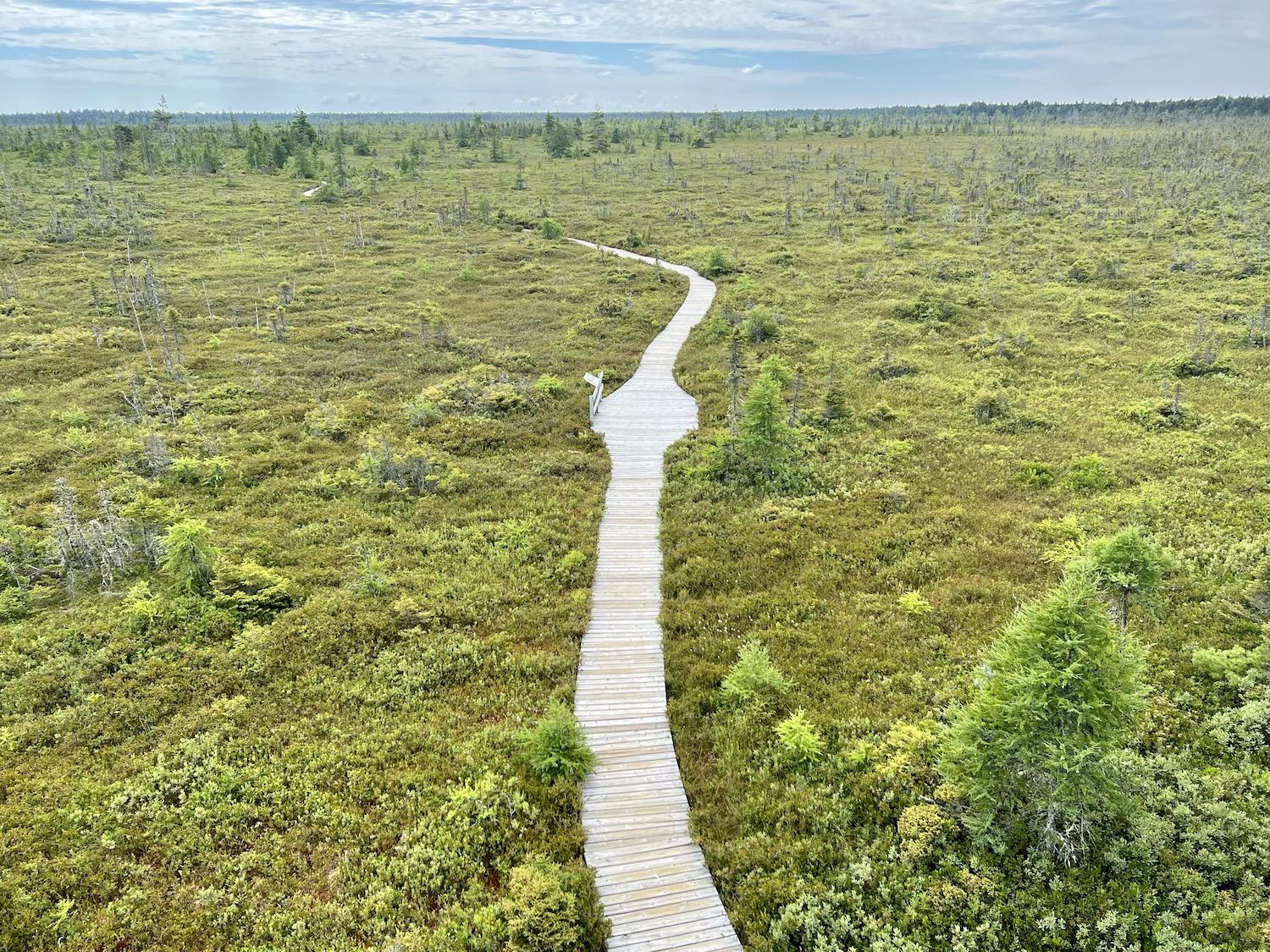
While Kouchibouguac is a coastal park, it also has bogs and this is the view from an observation tower on the Bog Trail/Jennifer Bain
It takes just a few minutes to drive to the Bog Trail, which is a little longer at two kilometres (one mile).
I follow another boardwalk through another forest to the edge of a peat bog and then climb a six-metre (20-foot) spiral staircase to the top of a tower, reading interpretive panels as I go. I almost have the whole bog to myself, except for one family that’s leaving as I arrive. After the tower, I continue walking across the bog until the boardwalk abruptly ends with an observation deck. There's no choice but to turn around and return the way I came. The boardwalk is here for a reason and the bog is too fragile, and too important, to trample on.
There aren’t any moose munching away on the bog today, but there are plenty of carnivorous pitcher plants, which use their odor to attract insects into cup-shaped leaves.
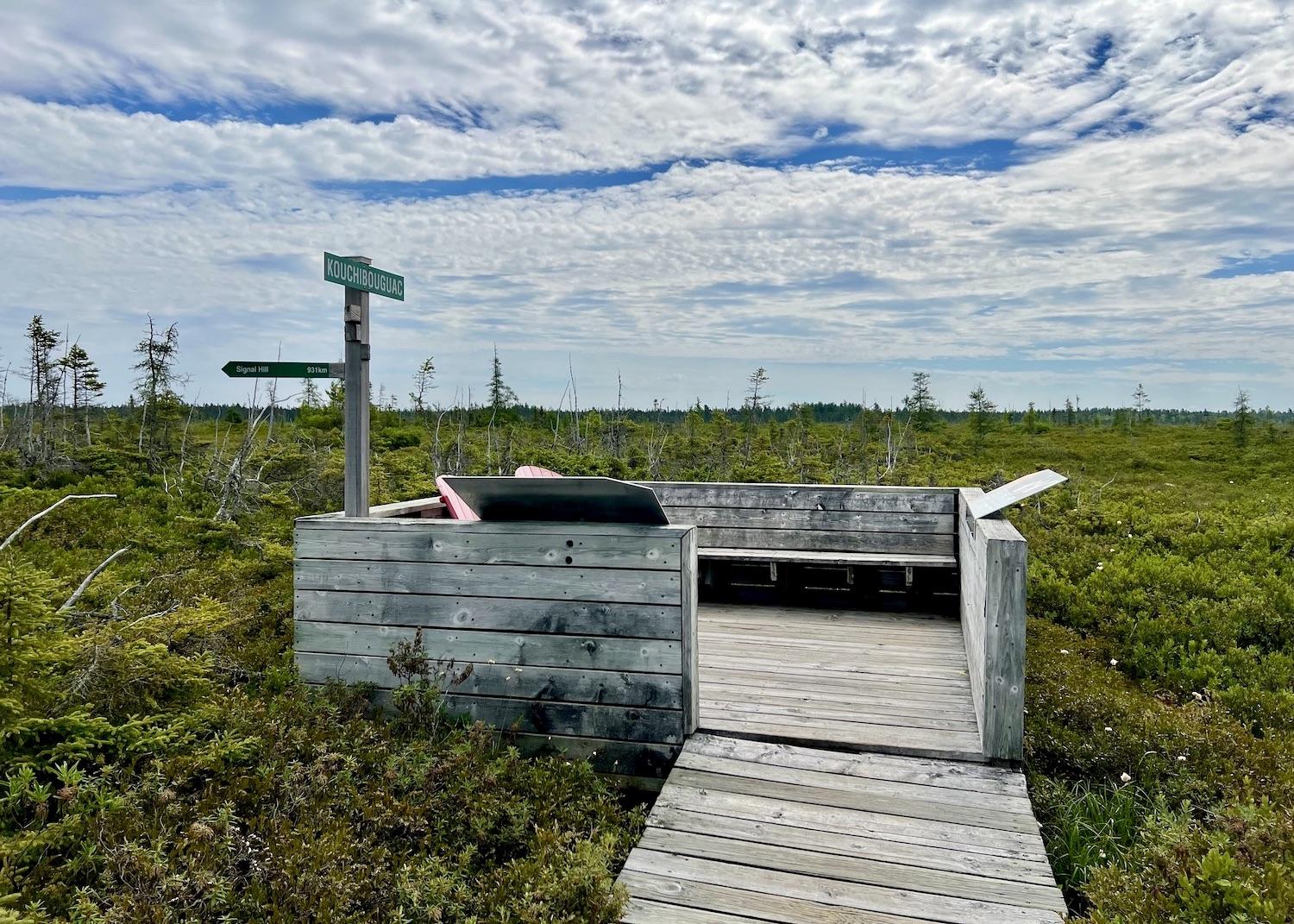
The Bog Trail ends in the middle of the bog at this observation deck, which offers a quiet place to reflect on nature/Jennifer Bain
Interpretive signage tells me to “breathe, listen, look, smell, and feel how special this place is,” and so I take some time to reflect.
On the way back to the trailhead, I remember my scavenger hunt handout. I am on the lookout for eight things — Common Labrador Tea, Black Crowberry, Bunchberry, Bog Rosemary, Purple Serviceberry, Sheep-Laurel, Small Cranberry and Cloudberry (Bakeapple), and easily recognize a few of them.
But I’ve been spoiled by that in-depth wigwam talk with Sock, and without her colorful Mi'kmaq stories, the plants — as pretty as they are — just don’t come to life in the same way.

Add comment